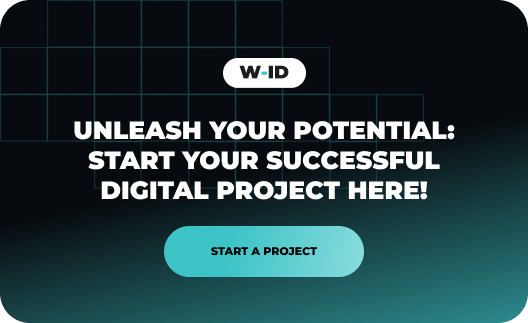Google EEAT is a set of guidelines the search engine uses to evaluate the quality of web content. The acronym stands for Experience, Expertise, Authoritativeness, and Trustworthiness, representing the four key characteristics Google seeks in high quality, helpful information.
- Experience: Does the content creator have firsthand, real life experience with the topic?
- Expertise: Does the creator possess the necessary knowledge or skill in the field?
- Authoritativeness: Is the creator or website a known authority on the subject?
- Trustworthiness: Is the content accurate, honest, and safe for users?
You now have the basic definition of Google EEAT, but mastering this framework involves more than just understanding the terms. To truly prepare your business for 2026, you must uncover the specific signals that demonstrate each pillar to Google. Keep reading to explore the practical strategies and common mistakes to avoid.
Deconstructing E-E-A-T: The Four Pillars of Quality
To fully leverage the Google EEAT framework, you must first understand each of its four components individually. These pillars work together to form a complete picture of your content quality and credibility, so let us break them down.
Experience: The Foundation of Authenticity
First, Experience refers to the practical, firsthand involvement of the content creator. For example, a person who has actually used a product provides a more valuable review than someone who has only read about it. Consequently, Google prioritizes content that shows real world application and personal insight.
To demonstrate experience, you can create content that details your personal journey, showcases case studies, or provides unique visuals from your own work. In short, prove you have done what you are writing about.
Expertise: Showcasing Deep Knowledge
Next, Expertise is about having a high level of knowledge or skill in a particular field. This is especially crucial for complex subjects. For instance, a certified accountant should write tax advice, not a hobbyist blogger. This pillar validates the factual accuracy of your content.
You can signal expertise by citing credible sources, explaining complex topics simply, and consistently producing in depth articles on a specific niche. Above all, your content must reflect a deep understanding.
Authoritativeness: Becoming a Go-To Source
Furthermore, Authoritativeness measures how recognized you or your website are as a leader in your industry. This is often built over time through external validation. For example, when other reputable sites link to your content, they are vouching for your authority.
Building authority involves earning backlinks from respected domains, getting mentions in industry publications, and fostering a strong brand reputation. Therefore, authoritativeness is about your place within the larger community.
Trustworthiness: The Cornerstone of Credibility
Finally, Trustworthiness or Trust is the most important part of EEAT. Without trust, the other pillars crumble. It means your site is secure, your information is accurate, and your intentions are transparent. This includes everything from having an SSL certificate to providing clear author information.
To build trust, ensure your website has clear contact information, transparent policies, and positive user reviews. In conclusion, users must feel safe and confident when they engage with your content.
Why Experience Is the New SEO Game-Changer
The recent addition of Experience to the original E-A-T framework signals a major shift in how Google evaluates content. This change emphasizes the value of authenticity and real world insight, moving beyond purely academic or theoretical knowledge. Consequently, businesses must adapt their content strategies to stay competitive.
Previously, content could rank well if it was well researched and written by a knowledgeable person. However, Google now seeks an additional layer of credibility. It wants to know if the author has direct, personal experience with the subject matter. This makes content more relatable, practical, and ultimately more helpful to the end user.
What Firsthand Experience Looks Like in Content
Demonstrating firsthand experience requires a different approach to content creation. Instead of summarizing information from other sources, you need to produce original insights derived from your own activities. Here are some examples:
- Product Reviews: Include original photos and videos of you using the product. Describe the pros and cons based on your actual usage, not just the spec sheet.
- Tutorials and How-To Guides: Show the steps you took with clear, original images. Discuss challenges you faced and how you overcame them.
- Case Studies: Detail a project from start to finish. Share specific data, results, and the lessons you learned along the way.
- Personal Stories: Share your journey related to the topic. For instance, if you write about fitness, share your own transformation story.
By incorporating these elements, you create content that is unique and difficult to replicate. Moreover, this approach naturally builds a stronger connection with your audience because it feels genuine. As you develop your website, remember that authentic experience is a core part of a professional online presence. When you hire a professional website developer, they can help you structure your site to best highlight this experience.

Actionable Steps to Boost Your Website E-E-A-T
Understanding the principles of Google EEAT is one thing, but implementing them is another. Fortunately, you can take concrete steps to improve how your website signals Experience, Expertise, Authoritativeness, and Trust. Here are several practical actions to get you started.
1. Create Detailed Author Biographies
First, let your audience know who is behind your content. Every article should link to a detailed author bio page. This page should include:
- The author’s name and professional photo.
- Their credentials, education, and relevant qualifications.
- A summary of their experience in the industry.
- Links to their social media profiles or other publications.
This transparency helps establish both expertise and trustworthiness. It shows that real, qualified people are creating your content.
2. Cite Reputable Sources and Data
Whenever you make a factual claim, you must back it up. In fact, citing your sources is a powerful signal of trust. Link to authoritative studies, official reports, and expert opinions. For example, according to HubSpot research, 81 percent of consumers trust recommendations from family and friends over businesses, which underscores the need for authentic, trustworthy content.
In addition, you can reference official documentation to support your points. For instance, Google itself provides extensive guidelines on creating helpful, reliable, people-first content. This shows you align your practices with expert consensus.
3. Showcase Social Proof and User Reviews
Next, let your customers and audience speak for you. Social proof is a powerful indicator of authoritativeness and trust. You can display this by:
- Featuring customer testimonials and case studies prominently.
- Displaying ratings and reviews from third party platforms like Google or Trustpilot.
- Highlighting awards, certifications, or media mentions your business has received.
This external validation proves that others value your expertise and find your business credible.
4. Ensure Website Security and Transparency
Finally, your website itself must be a secure and trustworthy environment. A simple but critical step is installing an SSL certificate to enable HTTPS. This encrypts data between your server and the user, protecting their privacy. Furthermore, make it easy for users to find your contact information, privacy policy, and terms of service. These elements show you are a legitimate and accountable organization.
The Impact of E-E-A-T on YMYL and AI Overviews
While Google EEAT is important for all content, its significance skyrockets for topics classified as Your Money or Your Life or YMYL. Mastering these principles is no longer just good practice; it is essential for visibility, especially with the rise of AI driven search results.
Why E-E-A-T Is Critical for YMYL Topics
YMYL topics are subjects that can significantly impact a person’s health, financial stability, safety, or happiness. Examples include medical advice, financial guidance, legal information, and news on important civic events. For these queries, Google applies the strictest E-E-A-T standards because low quality information can cause serious harm.
For instance, inaccurate medical advice could have severe health consequences. Similarly, poor financial advice could lead to devastating monetary losses. Therefore, Google’s algorithm heavily favors content from demonstrably expert, authoritative, and trustworthy sources for these sensitive topics.
Connecting E-E-A-T to Google AI Overviews
The strategic goal for modern content is to be cited in Google AI Overviews. These AI generated summaries appear at the top of search results, answering user questions directly. Because these overviews aim to provide definitive answers, the AI will pull information only from the most credible sources available.
This is where your E-E-A-T signals become paramount. A website with strong E-E-A-T is more likely to be treated as a canonical source of information by Google’s AI. Consequently, your content has a higher chance of being featured, driving visibility and capturing high intent traffic from users who click through for more details. Focusing on strong E-E-A-T is a core part of any modern SEO strategy, and leveraging expert SEO optimization services can help you align your entire website with these critical quality signals.
Preparing for 2026: Future-Proof Your Content Strategy
As search technology continues to evolve, especially with advancements in AI, the principles of Google EEAT will only become more ingrained in algorithms. Preparing your business for 2026 means treating E-E-A-T not as a temporary tactic, but as a foundational element of your entire digital strategy.
Adopt an E-E-A-T First Mindset
First and foremost, shift your content creation process to prioritize E-E-A-T from the very beginning. Instead of asking how to optimize a finished article, ask how to create an article that is inherently experienced, expert, authoritative, and trustworthy from the start. This involves:
- Commissioning Content from True Experts: Hire writers and creators who have demonstrable firsthand experience and credentials in your field.
- Investing in Original Research: Conduct your own surveys, studies, or experiments to generate unique data that establishes your authority.
- Building Your Brand Beyond Your Website: Engage in industry communities, speak at events, and build relationships to grow your reputation.
Conduct Regular Content Audits
Additionally, E-E-A-T is not a set it and forget it task. Information becomes outdated, and industry standards change. Therefore, you should schedule regular content audits to review your existing pages. During these audits, assess whether your content is still accurate, relevant, and helpful. Update statistics, refresh examples, and remove any information that is no longer correct.
Focus on Building User Trust Long Term
Ultimately, the core of E-E-A-T is building a genuine relationship with your audience. Every piece of content, every website interaction, and every customer service response contributes to your overall trustworthiness. By consistently delivering value and operating with transparency, you create a loyal audience that champions your brand. This human connection is a powerful asset that will remain valuable no matter how search algorithms change in the future.
Frequently Asked Questions About Google E-E-A-T
Google EEAT is not a single, direct ranking factor with a specific score. Instead, it is a framework of concepts that Google uses to build its algorithms. Many different signals that align with E-E-A-T do influence rankings.
A new website can show E-E-A-T by focusing on a specific niche to build expertise. You can feature detailed author bios with credentials, produce content based on firsthand experience, and ensure the website is technically secure and transparent from day one.
Yes, E-E-A-T applies to all websites, but its importance is much higher for Your Money or Your Life (YMYL) topics like health and finance. Even for entertainment or hobby sites, demonstrating these qualities helps build a loyal audience and signals quality to Google.
Experience refers to firsthand, practical involvement with a topic, such as actually using a product. Expertise refers to formal knowledge and skill, such as having a degree or professional certification in a subject. Both are valuable signals of content quality.
Improving E-E-A-T is an ongoing process, not a quick fix. While you can make technical improvements for Trust quickly, building true Authority and Expertise can take many months or even years of consistently producing high quality content and building a reputation in your industry.
